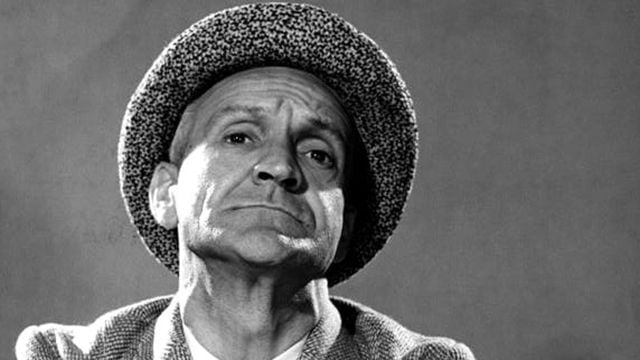This week sees the Cardiff area hosting the biggest event of the year and I’m not referring to the Olympic football played in the Millennium Stadium. The National Eisteddfod of Wales, the country’s premier cultural festival, is being held in the Vale of Glamorgan from 4-11 August. The village of Llandow , near Llantwit Major, welcomes an event that regularly attracts around 150,000 visitors over the course of a week.
Eisteddfod literally means a ‘sitting’ and is a music and poetry competition dating back to the Middle Ages. The first one of these to be officially called ‘eisteddfod’, was held by Lord Rhys in Cardigan in 1176. Various types of eisteddfodau exist including the International Eisteddfod held annually in Llangollen, the youth (Urdd) eisteddfod as well as local events. Eisteddfodau are also held among the Welsh descendants in Patagonia, Argentina and also, in the form of musical competitions, in Australia. While the Patagonian version is bilingual Spanish-Welsh and the Australian event is English-medium, the National Eisteddfod has operated a Welsh-only rule since 1950. Songs written in other languages must be translated to be performed at the Eisteddfod and only Welsh can be spoken on the stage of the main pavilion or the sub-pavilions. However, non-Welsh speakers are welcome at the festival and are provided with free simultaneous interpreting equipment.
The main event at the Eisteddfod is the chairing of the bard. The winner of the chair must compose an ode, which is a long poem in a strict form called cynghanedd, including alliteration and internal rhyme. The chairing ceremony is perhaps the best known of all Eisteddfod traditions as it is presided over by the Archdruid accompanied by the members of the Gorsedd who are dressed in long, green, blue and white gowns. This most peculiar tradition invokes Wales’s pre-Christian past and was invented by the somewhat eccentric antiquarian and poet Iolo Morganwg (Iolo of Glamorgan) in the 19th Century. Many believe he may have been under the influence of opium at the time, but however surreal his vision of the Gorsedd of bards may appear, it is now one of the most respected Welsh institutions, membership of which is the greatest honour that can befall a Welsh speaker.
The week includes various competitions from limericks to operatic solos, or brass bands, creative dancing, step dancing and arts and crafts. The Eisteddfod is more than the main pavilion and the literary tent, however. There is much activity on the Eisteddfod site or field and many regular attendees hardly ever set foot in the pavilion, preferring to travel the field visiting stalls and society tents, listening to pop music, meeting Sam Tân (Fireman Sam) or greeting old friends. There are also numerous evening events, both official and fringe. This year’s evening concerts include appearances by Only Men Aloud and Only Boys Aloud at the opening concert, Dennis O’Neill and Rebecca Evans on the Saturday, a cymanfa of hymn singing on the Sunday, folk singer Dafydd Iwan on the Monday and a performance of Gwyneth Lewis’s translation of Shakespeare’s The Tempest among other events. The Welsh learner of the year will also be announced on 8 August.
Although generally a calm event, the Eisteddfod has seen its fair share of drama over the years. In 1912, when Chancellor David Lloyd George addressed the audience he was heckled by suffragettes, who were violently dragged away by police officers, causing quite a commotion. 1917 saw the Birkenhead Eisteddfod known as the ‘black chair’ Eisteddfod. As usual the name of the winning bard was kept a close secret, but when the winner’s alias was announced from the stage, nobody stood up and the chair was draped in black. The young shepherd Ellis Evans had been conscripted into the First World War and killed in Flanders after sending his submission to the Eisteddfod. The story of Hedd Wyn provided the background for the first British film nominated for a foreign-language Oscar. In 1969 Charles, future Prince of Wales, addressed the audience in his newly-learnt Welsh, leading to a mass walkout by campaigners opposed to his forthcoming investiture. One of the latest controversies to rock the formerly very pious Welsh-speaking community was the controversial decision to allow the sale of alcoholic drink on the Eisteddfod field in 2004. Things have improved since the times of the suffragettes – this year the Gorsedd is expected to approve its first ever woman Archdruid.
Current discussions revolve around financing – the cost being £3.4 million a year. Many believe money could be saved if the festival settled on a permanent site, as is the case for the Royal Welsh Agricultural show held every year in Builth Wells, rather than alternating between north and south Wales. For others, the legacy of the Eisteddfod in terms of the revival in the Welsh language brought to the hosting areas is even more important than the week’s activities and they argue that the event must remain peripatetic. A campaign to bring the Eisteddfod back to Liverpool for 2007 was also rejected on the grounds that the festival’s current purpose is to promote the language within Wales. Less than 25% of the Eisteddfod’s funding comes from the public purse; much of the funding is raised by local organisers or is collected at the gate. At £17 a day for an adult it is not cheap, but for regular Eistedfodwyr and many new visitors, a trip to the national event is well worth it.


